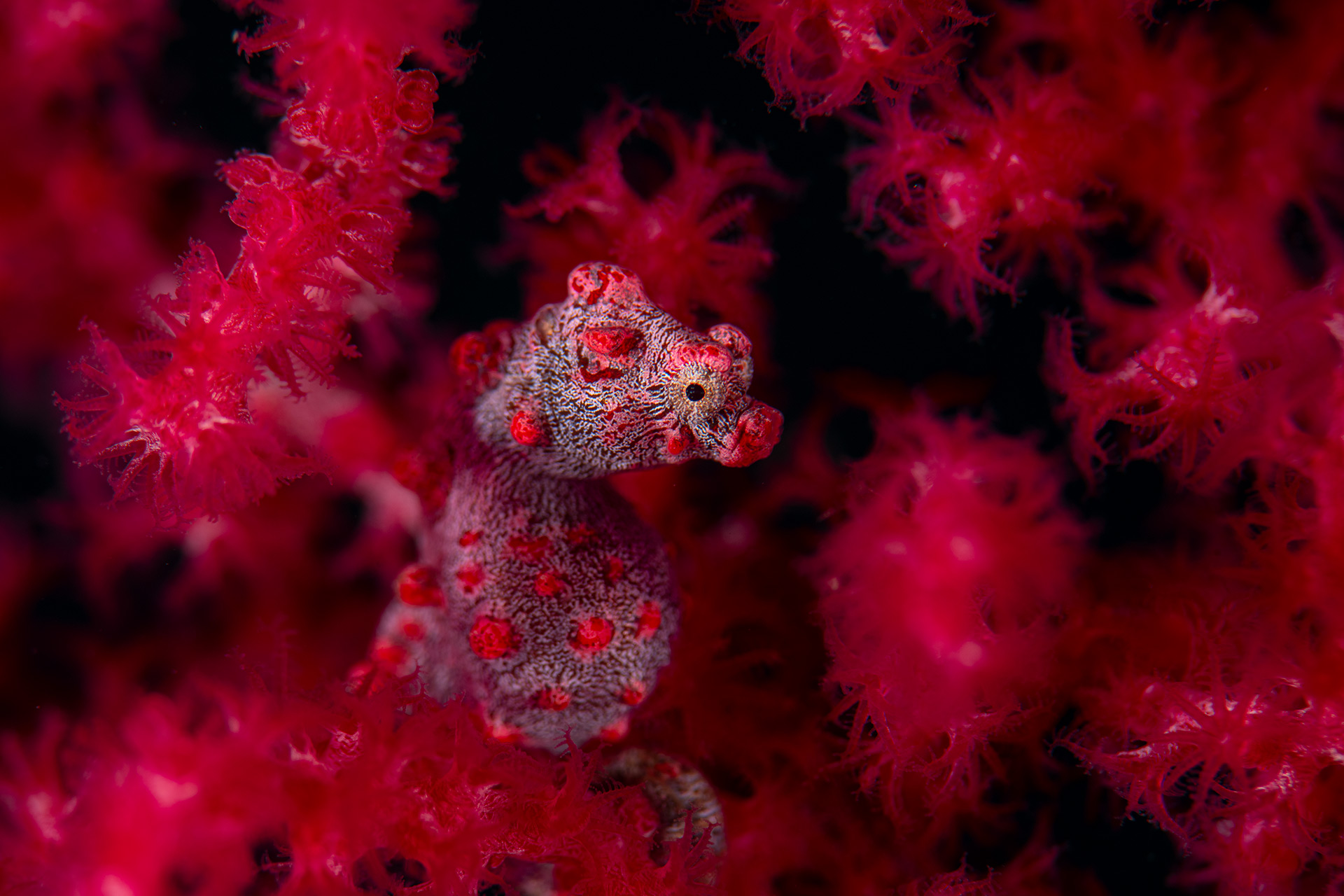

Name: Georg Nies
Picture title: Red in red
Category: Underwater
Nationality: Germany
Occupation: Marine biologist, underwater photographer and trader for underwater photo gear
Technical information
Camera: Nikon D850
Lens: Nikon Micro Nikkor AF-S 105mm 2,8G VR
EXIF: 1/250sec at f14 * ISO 100
Accessories: SEACAM underwater housin, 2x SEACAM Seaflash 150D, 2x SEACAM Achromat
WINNER CATEGORY UNDERWATER
Georg Nies| Red in red
Name: Georg Nies
Picture title: Red in Red
Category: Underwater
Nationality: Germany
Occupation: Marine biologist, underwater photographer and trader for underwater photo gear
Technical information
Camera: Nikon D850
Lens: Nikon Micro Nikkor AF-S 105mm 2,8G VR
EXIF: 1/250sec at f14 * ISO 100
Accessories: SEACAM underwater housin, 2x SEACAM Seaflash 150D, 2x SEACAM Achromat
Georg Nies says:
Photographing pygmy seahorses is an extremely difficult business. They are very small; rarely larger than 2 centimeter. But above all, they are very well camouflaged and difficult to find in the gorgonians in which they live. Even if you know that a seahorse is living in a gorgonian, does not guarantee that you will find them. Thanks to years of experience and a local dive guide who knows where to find the animals it could be possible. Usually such an image is created as a joint production. The local dive guide shows the seahorse to the underwater photographer. Because the animals are so tiny and we are talking about image scales of 2:1 or less, the usual way of working is as follows: The dive guide points to the animal with a small metal rod pointer stick. The photographer first looks at the hand of the dive guide and finds the seahorse using the pointer stick as a pathfinder. This requires a good interaction between the photographer and the dive guide.
Unfortunately, however, many pictures of pygmy seahorses and other curious animals underwater are not taken in a species-appropriate and environmentally friendly way. Tampering with animals and the environment to get a good picture is common practice. For example, to find the seahorses easier, the gorgonians are touched over a large area. This causes that the individual polyps are withdrawn and that the pygmies can be found more easily. Such manipulations can be recognized by the fact that all the polyps around the seahorse are closed and other polyps are still open a bit further away.
Moreover, the seahorse likes to turn away from the photographer. Using the pointer stick, they are turned “gently” by the dive guide towards the photographer, so that a front portrait is possible. Most importantly, the seahorses do not tolerate too much flashlight. Because they don’t have eyelids, they must endure the amount of light from the flashes. In areas where there are many underwater photographers, these animals go blind within a very short time and do not survive long. Therefore, the number of photos should be reduced to 6 to 8 per photographer.
I would like to take this opportunity to thank the jury of this photo competition very much. By awarding this photo they show that it is also possible to be awarded with a species-appropriate and environmentally friendly underwater photograph.

About Georg Nies
Germany
Georg Nies studied marine biology in Kiel (Germany) and did his doctorate in limnology to learn more about the fascinating underwater life. His passion for marine life is best reflected by the fact that he has been photographing underwater for more than 30 years. Since 10 years ago, he has changed his passion in his career by setting up a company that sells underwater camera equipment, organizing trips and workshops all over the world. Whether in Mexico, in the Maldives, on the coast of South Africa or Norway, he is happy to share all his knowledge with the participants and having fascinating stories to tell from 30 years of underwater experience.
